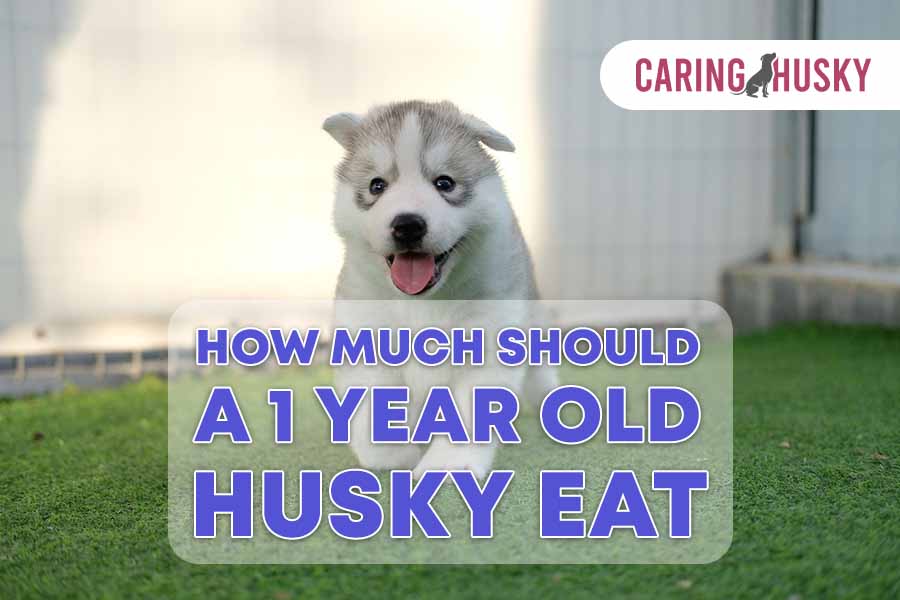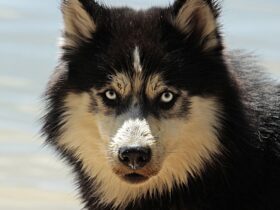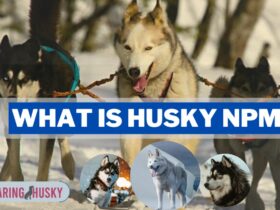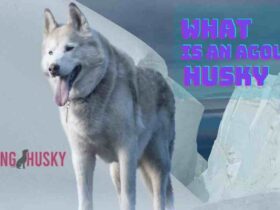Proper nutrition plays a pivotal role in the health and well-being of our beloved four-legged companions, and this holds especially true for Huskies, known for their striking appearance and energetic disposition. As a Husky owner, you’re likely aware of the unique dietary requirements that come with this breed, especially during the critical first year of your life. In this article, we will explore the essential aspects of feeding a 1-year-old Husky, helping you understand the factors influencing their dietary needs and how to strike the right balance to ensure a healthy, happy, and energetic Husky companion. Whether you’re a seasoned Husky owner or welcoming a new member to your family, this guide will provide valuable insights into the question, “How much should a 1-year-old Husky eat?”
How much should a 1-year-old husky eat?
The dietary needs of a 1-year-old Husky can vary based on several factors, including their size, activity level, and overall health. As a general guideline, most 1-year-old Huskies require about 1,000 to 1,400 calories per day, but this can vary. Following the feeding guidelines on the dog food label is crucial, and consult your veterinarian for personalized recommendations. Remember to monitor your Husky’s body condition and adjust their portions to maintain a healthy weight. Feeding a high-quality dog food appropriate for their life stage is essential for their overall well-being.
The Importance Of Breed-Specific Nutrition
Tailored Nutritional Requirements: One of the most significant advantages of breed-specific nutrition is that it considers the specific dietary needs of different breeds. Size, age, and activity level can significantly influence a dog’s nutritional requirements. For instance, a large breed like a Great Dane will have different dietary needs than a small breed like a Chihuahua. Breed-specific formulas are designed to address these variations.
Breeds vary widely in energy levels and activity requirements. High-energy breeds, like Border Collies or Siberian Huskies, demand more calories and nutrients to support their active lifestyles. In contrast, low-energy breeds may require a more calorie-controlled diet to prevent obesity and related health issues.
Some breeds are genetically predisposed to particular health concerns, such as joint problems, food allergies, or skin conditions. Breed-specific diets can incorporate ingredients that promote joint health, exclude common allergens, or address specific health concerns, helping to mitigate these risks.
Maintaining an ideal weight is crucial for a dog’s health. Breed-specific nutrition provides portion recommendations tailored to a breed’s size and metabolism, helping to prevent obesity and its associated health problems.
Certain breeds may benefit from diets rich in specific nutrients, such as omega-3 fatty acids, which support healthy skin and a shiny coat. Breed-specific formulas can incorporate these ingredients to enhance a dog’s appearance and comfort.
Some breeds are more prone to digestive sensitivities or food intolerances. Breed-specific diets can include gentle ingredients on the stomach, reducing the risk of gastrointestinal issues.
Different breeds may have distinct life stage requirements. Puppies, adult dogs, and seniors of a particular breed may benefit from diets adjusted to meet their changing nutritional needs, ensuring they receive the appropriate balance of nutrients throughout their lives.
Nutritional components like antioxidants and cognitive enhancers can be included in breed-specific diets to support mental alertness and behavior, particularly relevant for working or highly intelligent breeds.
What Factors Affect A 1-Year-Old Husky’s Dietary Needs?
Several factors can significantly influence a 1-year-old Husky’s dietary needs. It’s important to consider these factors to ensure your Husky receives the appropriate nutrition for their age and individual characteristics. The key factors include:
Size and Weight: The size and weight of your 1-year-old Husky play a crucial role in determining their dietary needs. Larger Huskies generally require more calories and nutrients than smaller ones. Monitoring your Husky’s weight and adjusting their food portions is essential to prevent underfeeding or overfeeding.
Activity Level: Huskies are known for their high energy levels and require a diet that supports their active lifestyle. An active Husky engaged in regular exercise and activities will need more calories than a passive one. Adjust their food intake to maintain a healthy weight based on their activity level.
Metabolism: Each dog’s metabolism is unique. Some Huskies have a faster metabolism, which means they burn calories more quickly and may require a higher calorie intake. Others may have a slower metabolism and need fewer calories to maintain weight.
Health Condition: If your Husky has any underlying health conditions or is recovering from an illness or surgery, their dietary needs may change. Consult with your veterinarian to determine the best diet for managing your specific health condition.
Life Stage: A 1-year-old Husky is considered an adult, but they are still maturing. Their nutritional needs differ from those of a puppy. Ensure you transition from puppy food to an adult formula, adjusting the protein, fat, and nutrient content accordingly.
Temperature and Climate: Environmental factors, such as the temperature and climate in which your Husky lives, can affect their energy expenditure. In colder weather, Huskies may burn more calories to maintain their body temperature and require a slightly higher calorie intake.
Breeding Status: If your Husky is intact (not spayed or neutered), their dietary needs may vary due to hormonal changes. Some intact Huskies have higher energy requirements than spayed or neutered ones.
Food Quality and Type: The type and quality of the food you provide play a critical role in meeting your Husky’s dietary needs. High-quality commercial dog food with appropriate protein, fat, and carbohydrate ratios is generally recommended. Some Husky owners opt for homemade or raw diets, but ensuring they are well-balanced and meet all nutritional requirements is essential.
Food Allergies and Sensitivities: Like all dogs, Huskies can develop food allergies or sensitivities. Pay attention to any signs of allergies or digestive issues, such as skin problems, vomiting, or diarrhea, and adjust their diet accordingly.
Consultation with a Veterinarian: Finally, consulting with a veterinarian or canine nutritionist is crucial to determine the precise dietary needs of your 1-year-old Husky. They can provide personalized recommendations based on your Husky’s factors and ensure they receive the best nutrition for their health and well-being.
How Do You Choose The Right Type Of Food?
Choosing the right type of food for your 1-year-old Husky is a critical decision that can significantly impact their health and well-being. Here are some steps and considerations to help you make an informed choice:
- Consult Your Veterinarian: Before making any dietary changes, consult your veterinarian. They can provide valuable insights into your Husky’s specific nutritional needs based on size, activity level, and underlying health conditions.
- Consider Your Husky’s Age: At 1 year old, your Husky is transitioning from puppyhood to adulthood. While some Huskies can switch to adult food at this age, others may benefit from staying on high-quality puppy food a bit longer, depending on their growth and development. Discuss the best approach with your vet.
- Select High-Quality Brands: Opt for well-established and reputable dog food brands known for their commitment to quality and safety. Look for brands that meet or exceed industry standards for pet nutrition.
- Read the Ingredient List: Examine the ingredient list on the dog food label. Ideally, the first few ingredients should be high-quality protein sources like chicken, beef, or fish. Avoid foods with fillers, artificial additives, or excessive grains as primary ingredients.
- Protein, Fat, and Carbohydrate Ratios: Consider the food’s protein, fat, and carbohydrate ratios. Huskies are typically active dogs, so a balanced protein and fat content diet is usually suitable. Protein should make up a significant portion of the diet.
- Avoid Allergens: Be aware of potential food allergies or sensitivities your Husky may have. Consider hypoallergenic or limited-ingredient diets if you notice signs of allergies or digestive issues, such as itching, vomiting, or diarrhea.
- Special Formulas: Some dog food brands offer breed-specific or size-specific formulas designed to meet the needs of specific breeds or dog sizes. These formulas can be a good option for Huskies.
- Wet vs. Dry vs. Raw vs. Homemade: Choose the food that aligns with your preferences and your Husky’s needs. Each has its pros and cons. Dry kibble is convenient and helps with dental health. Wet food is palatable and hydrating. Raw and homemade diets provide control over ingredients but require careful preparation and balance.
- Budget Considerations: While quality is essential, also consider your budget. High-quality dog food can be more expensive, but it may contribute to your Husky’s long-term health and reduce veterinary bills. Look for deals or consider store loyalty programs to help manage costs.
The Different Types Of Food For 1-Year-Old Husky
There are several different types of food options to consider for a 1-year-old Husky. Each type of food has its own advantages and considerations, so choosing the one that best aligns with your Husky’s specific needs and preferences is essential. Here are the primary types of food for 1-year-old Huskies, detailed in paragraphs:
Dry Dog Food (Kibble):
Dry dog food, known as kibble, is among the most popular choices for Husky owners. It offers several advantages, including convenience, affordability, and dental health benefits. Many high-quality dry dog foods are formulated to meet the specific nutritional needs of active breeds like Huskies. They typically contain a balanced ratio of protein, fats, and carbohydrates. Look for kibble with real meat as the primary ingredient, and avoid those with excessive fillers or artificial additives. Dry food is easy to store and has a longer shelf life, making it a practical option for many Husky owners.
Canned Dog Food (Wet Food):
Canned dog food, often wet food, is an alternative to dry kibble. It contains higher moisture content, which can help keep your Husky hydrated. Wet food particularly appeals to picky eaters due to its strong aroma and flavor. It can also be a suitable option for Huskies with dental issues, as it is soft and easy to chew. When selecting canned food, prioritize those with high-quality protein sources and minimal fillers. However, it tends to be more expensive than dry kibble and has a shorter shelf life once opened.
Raw Diet (BARF or Prey Model):
Some Husky owners opt for a raw diet, which involves feeding their dogs raw meat, bones, organs, and vegetables. This approach aims to mimic a dog’s ancestral diet and is believed to offer numerous health benefits, including improved coat condition and digestion. However, preparing a balanced raw diet requires careful planning and knowledge of canine nutrition. It’s essential to consult with a veterinarian or canine nutritionist to ensure your Husky’s diet is well-balanced and safe.
Homemade Dog Food:
Homemade dog food provides complete control over the ingredients you feed your Husky. You can tailor the diet to meet their specific preferences and dietary needs. However, creating a nutritionally balanced homemade diet can be challenging and time-consuming. Following a recipe or consult with a veterinarian or canine nutritionist is crucial to ensure that your homemade meals provide all the necessary nutrients. Homemade diets often require supplementation to meet dietary requirements fully.
Dehydrated or Freeze-Dried Dog Food:
Dehydrated or freeze-dried dog food is a convenient compromise between raw and kibble diets. These foods are minimally processed, and moisture is removed to extend shelf life. They typically retain more nutrients than traditional kibble and are easier to store. Look for brands that use high-quality ingredients and avoid artificial additives. Dehydrated and freeze-dried options can benefit Husky owners seeking a balance between convenience and nutritional quality.
Conclusion
Selecting the correct type of food for your 1-year-old Husky is a crucial decision that directly impacts their health and overall well-being. The variety of options available, including dry kibble, canned food, raw diets, homemade meals, and dehydrated or freeze-dried options, allows you to tailor your choice to your Husky’s specific needs and lifestyle. When making this decision, it’s essential to prioritize high-quality ingredients, focusing on accurate meat sources and avoiding excessive fillers or artificial additives. Additionally, consulting with a veterinarian or canine nutritionist is invaluable in ensuring your Husky’s diet meets their requirements.







Leave a Reply